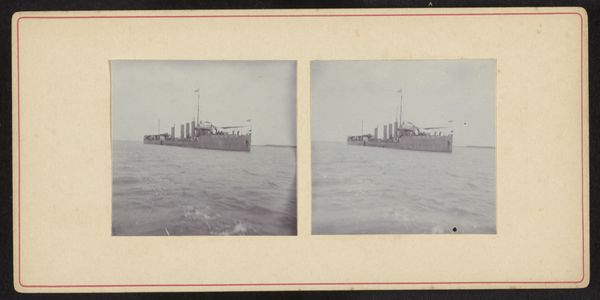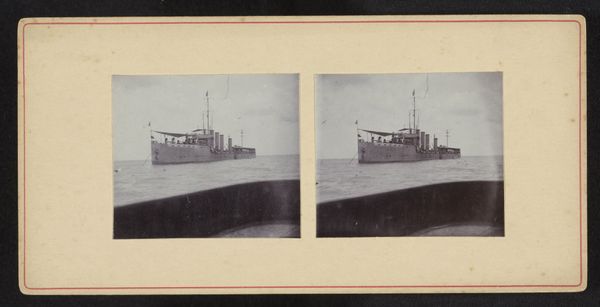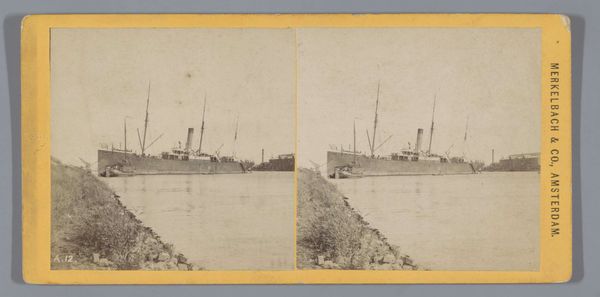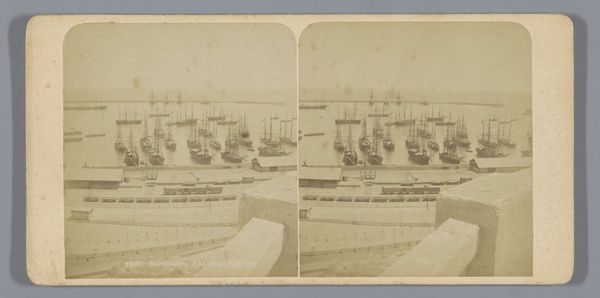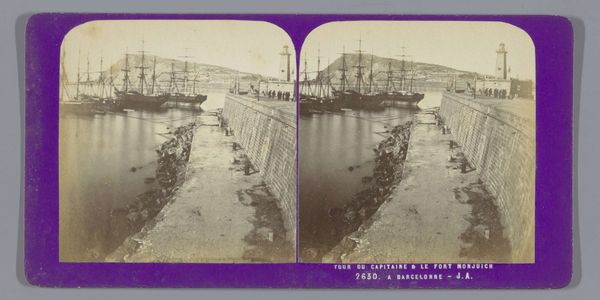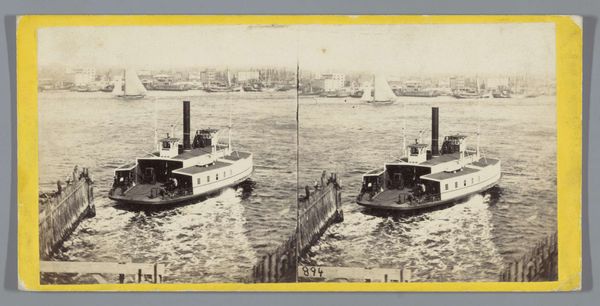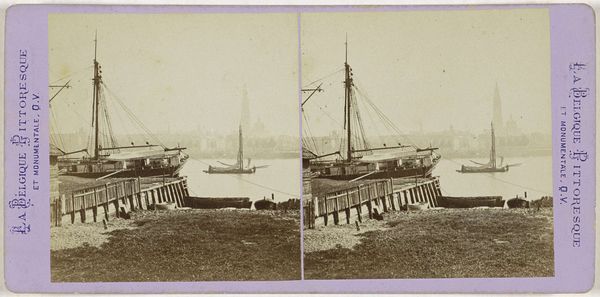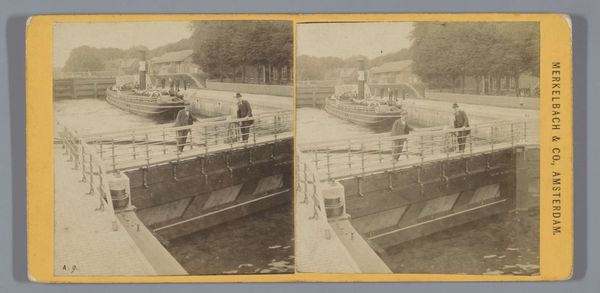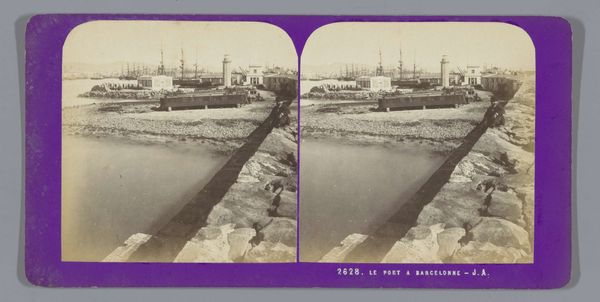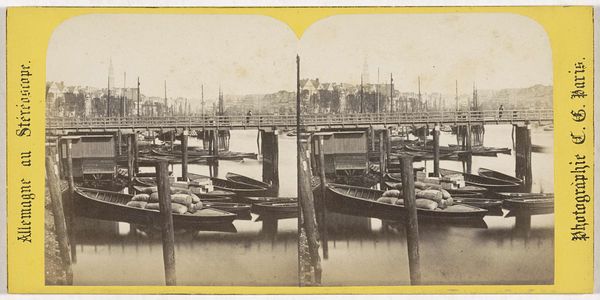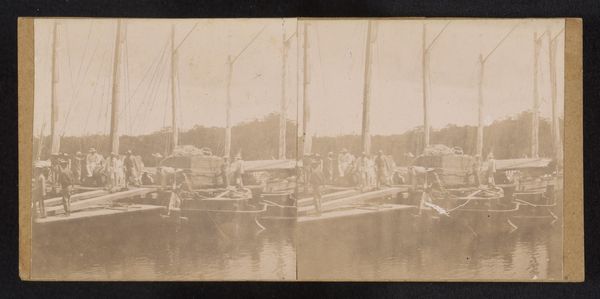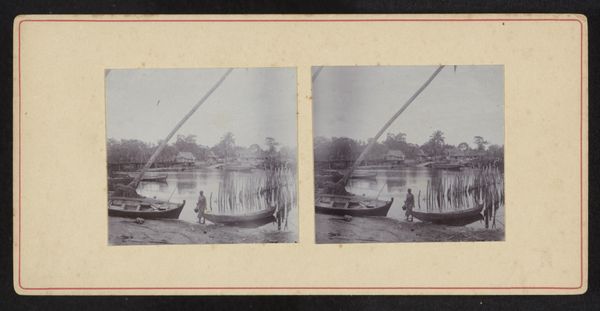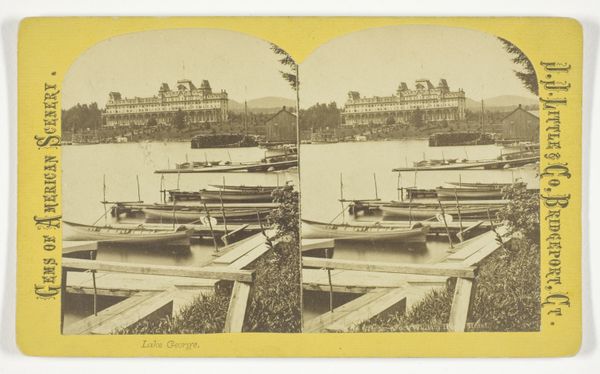
Boten in de Guadalquivir te Sevilla, met op de achtergrond het Palacio de San Telmo 1862 - 1876
0:00
0:00
photography
#
landscape
#
photography
#
cityscape
Dimensions: height 85 mm, width 170 mm
Copyright: Rijks Museum: Open Domain
Curator: This striking stereoscopic photograph, "Boats in the Guadalquivir at Seville, with the Palacio de San Telmo in the Background," was taken by Jean Andrieu between 1862 and 1876. What strikes you initially? Editor: There’s a stark tranquility here, despite the implied bustle of a port city. The tones are quite muted, sepia leaning toward umber, giving everything a hazy, almost dreamlike quality. The horizontal lines create a strong sense of calm. Curator: Indeed, the composition is key. Note how the rigid lines of the boats are reflected in the sharp architectural lines of the Palacio in the background. Consider what this might represent at a societal level. These steamships are products of their time period, reflecting the industrial prowess of the 19th century and the evolving socio-economic landscape of Seville during this period. Editor: The use of light really emphasizes the textures, doesn't it? The rough, earthy embankment in the foreground plays against the smoother surfaces of the boats and water, creating an interesting contrast, but beyond surface texture what feelings does it create? The repetition in this work also interests me; what are you considering here? Curator: Think about how the mass reproduction and circulation of images during this time also greatly shaped visual culture and public perception, both by informing a popular view of Seville. With consideration of mass reproductions the photographic print allows a widespread consumption of places and imagery that were otherwise exclusive or inaccessible. Consider Andrieu’s process of creating this image—capturing, printing and creating these stereoscopic images so they are commercially accessible. Editor: It certainly gives us much to reflect on, with that sense of photographic truth, now faded and historicized by our experience. Its strength, it seems, is how powerfully the elements speak, and also evoke the period of massive societal change through new technologies that were developing, from engineering to photography, around that time. It reminds us of photography’s powerful documentarian potential during a rapidly changing landscape, now viewed from the modern age.
Comments
No comments
Be the first to comment and join the conversation on the ultimate creative platform.
